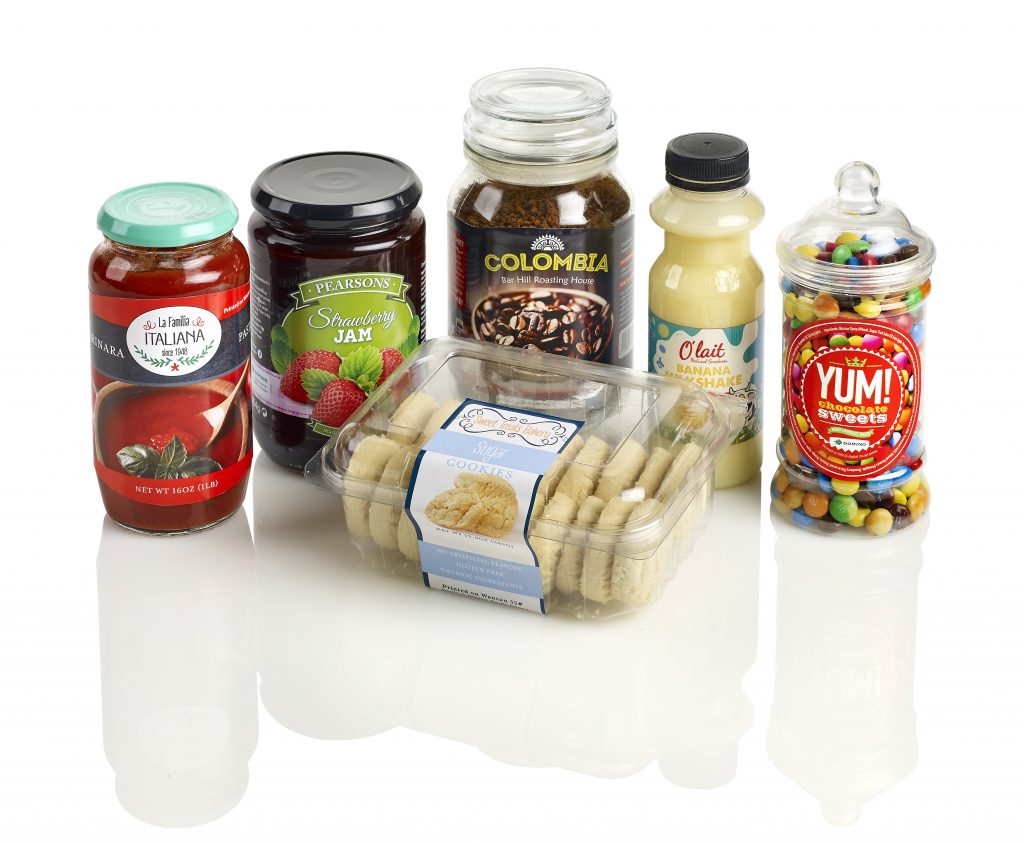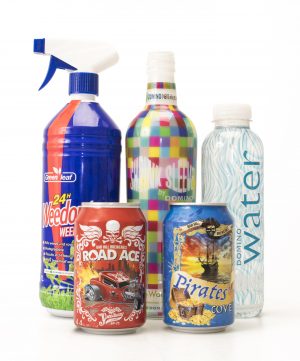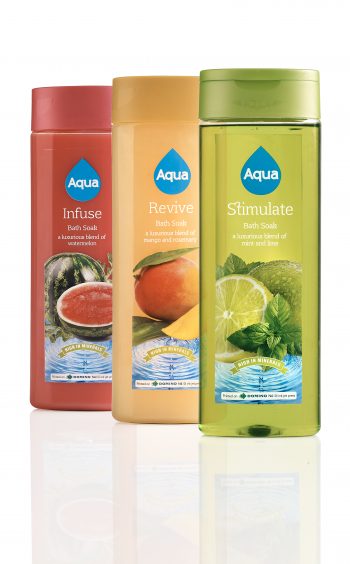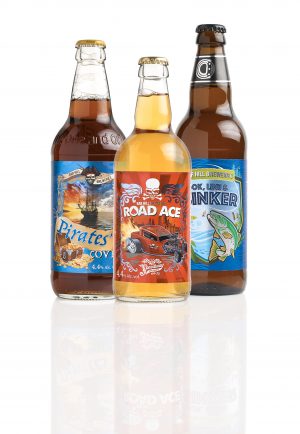
Features
Digital Printing
Packaging
Printing
Digital label printing and finishing
A closer look at the processes behind the array of labels seen today
October 23, 2020 By Heather Roth
 Photo: Rotocontrol
Photo: Rotocontrol When buying a product, do you often make your choice based on the label? If your answer is yes, you’re not alone.
As consumers decide within seconds which product to buy, labels and packaging are key factors for product to be competitive on the shelf. It’s not just the visual appeal of a label or package that makes the sale, but also its tactile allure with embellishments such as gloss or embossing.
Since the mid-2000s, digital label printing and finishing has evolved as a popular process for printers. What’s produced in the printing industry and the technologies behind it is heavily influenced by consumer purchasing behaviour.
Here’s a closer look at the processes behind the array of labels you see on shelves today.
Why go digital?
The need to produce great looking labels that consumers love is the same today as it was years ago. However today, more challenges are involved.
When label printers combine their customers’ needs with their own business revenue and profit initiatives, it’s obvious that the process for completing jobs quickly and efficiently is changing fast.
Label printers look to invest in presses that provide added potential for greater sales growth and increased profitability, while reducing production cost and complexity.
Inkjet technology is non-contact, with few moving parts, no printing plates, no drums and no blankets. Quite simply, it provides consistent print results.
The inks are designed to deliver a wide gamut while also delivering key mechanical features and benefits of inkjet digital printing technologies. They provide superior adhesion with unparalleled resistance to heat and cold, sunlight, chemicals and abrasion to maintain the highest quality through the life of the final product.
Unique digital textured effects deliver increased shelf appeal that can open up new applications for the press owner.
There are digital label presses in the market capable of achieving in excess of 92 per cent of the Pantone® colour range without the need to make plates or the complexity of mixing spot colours.
These presses can also accommodate customer demand for shorter production runs, reduce lead-time with multiple SKUs or versions (i.e. flavours, colours or varieties), and combine the productivity of flexo printing. The flexibility offered by rapid job changes in digital technology are just a few of the many benefits of inkjet printing.
The finish line
To keep the inkjet label press churning, it’s common to move the printed rolls to a separate machine to complete the finishing process. This helps reduce production cost and complexity.
Finishing machines for digitally printed labels can range from basic inspection, slitting and rewinding to more elaborate die-cutting and embellishing. Short set-up times, low waste generation, simple handling and a modular design for later expansion possibilities are key benefits of offline label finishing machines.
This is also where special finishing effects come into play that make labels and packaging pop, such as hot foil stamping, gloss or matte varnish, laminating foil gloss or matte, UV-blocker laminate, multilayer labels, screen printing and cold foil.
The result is a digitally printed label on a finished roll that is slit, embellished and ready to be applied to a bottle, container or package.
Best of both worlds
Hybrid label printing and finishing systems provide both processes in a modular, single in-line solution and are especially advantageous when producing highly-refined labels. Many suppliers in the narrow web industry have aligned their expertise in close partnerships to offer these hybrid solutions to a growing number of label printers.
In this end-to-end solution, a configuration could involve up to seven colours including opaque white, 600 dpi native print resolution and operating speeds accelerating to 70 m/min(230 ft/min), an unwind/rewind unit and waste rewind, multiple die cutting (die stations capable of running full or semi-rotary mode with simple changeover) and printing stations (rotary flexo and flatbed screen printing).
Embellishments also possible with a hybrid solution include lamination, cold foiling, hot stamping, label inspection, small roll programmable auto turret winding and 100 per cent servo control and compliance for food packaging.
User friendliness is a very high priority in the design, functionality and maintenance of both printing and finishing machines, with hands-on initial training and subsequent support traditionally provided by the suppliers.
An open architecture design provides easy operator access to the web and integrated modules, for increased efficiencies in operation/web handling and movement during production.
The end results
Applications for digital label printing and finishing are vast, including food and beverage, pharmaceutical, industrial, health and safety, consumer goods and personal care.
Vital for industrial applications, adhesion and abrasion are important for all printing applications to ensure the finished goods survive the journey to the shelf in prime condition, with the longest possible shelf life.
It’s important to use tested and proven ink sets using industry standards to maintain full adhesion on the widest range of substrates and remain highly abrasion resistant to maximize shelf appeal.
With virtually unlimited printing and converting options available in digital label finishing, printers can produce complex labels on a wide range of materials and substrates for maximum flexibility and future-proofed production capabilities.
Going digital helps label printers react to ever-changing customer demands, to ensure their labels remain a step ahead on the highly competitive shelf.
 Heather Roth has been in the label printing industry for over 10 years as Marketing Communications Manager with Rotocontrol.
Heather Roth has been in the label printing industry for over 10 years as Marketing Communications Manager with Rotocontrol.
This article was originally published in the July/August 2020 issue of PrintAction.
Print this page


